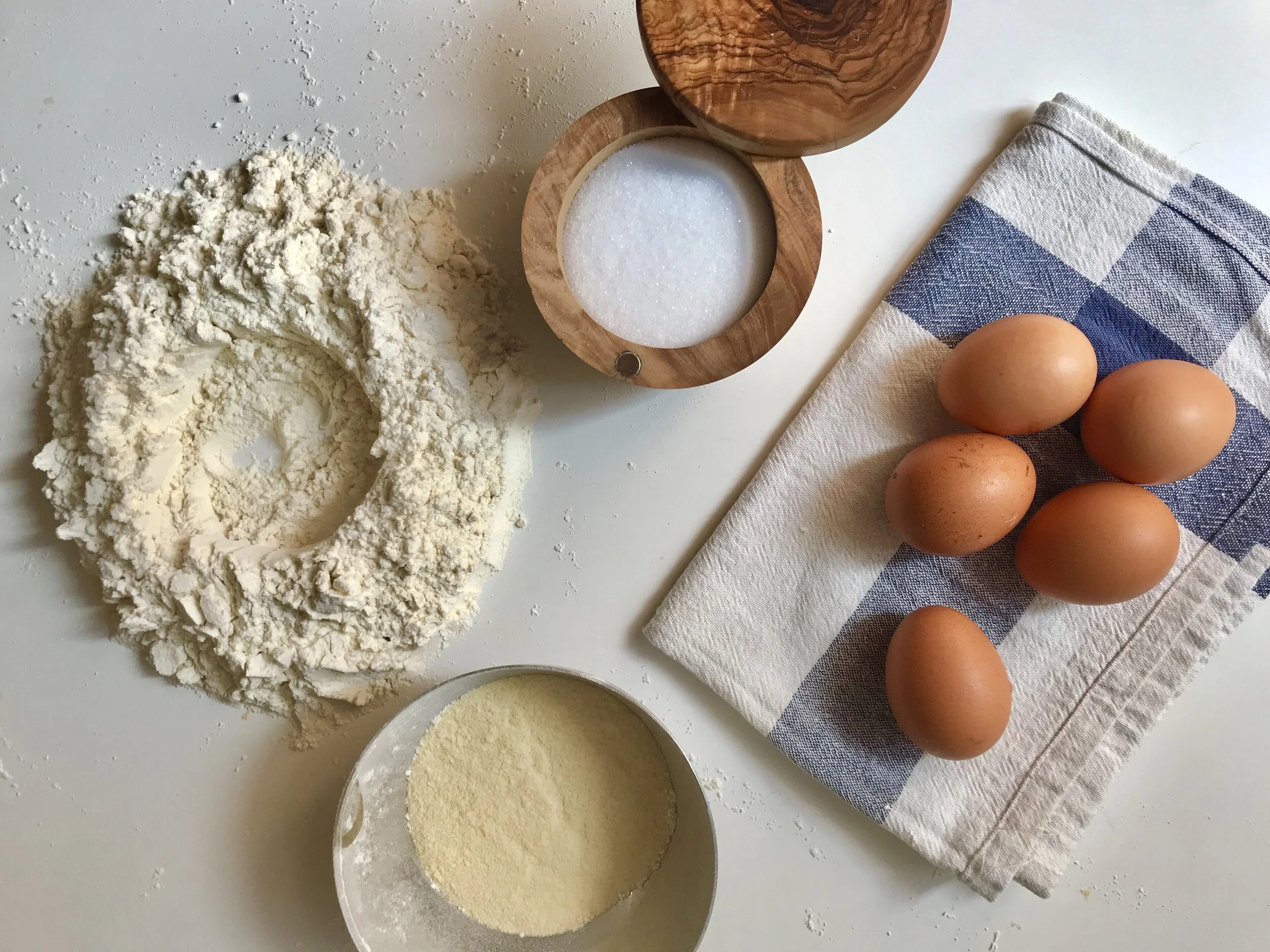Making (Egg) Pasta from Scratch
There’s nothing as tactile and satisfying as making your own pasta. It’s Play-Doh for grownups that ends with dinner. But is it worth the effort? This answer isn’t that it’s for when you’re feeling rustic and in need of a de-stresser. Fresh and dried pasta are fundamentally different, with distinct methods, ingredients, texture, flavor, and even the sauces that work best.
Fresh pasta most always is made with eggs, which flavor, strengthen, and enrich the dough. Dried pasta on the other hand is only semolina flour and water, with a strong and stiff gluten structure and a very long shelf life once properly dried. You can certainly make fresh pasta without egg, but in my view this makes sense only if you want to make your own filled pasta without animal products (or are going for a hard-to-find shape like lorighittas which don’t lend well to manufacturing).
Structure and Texture
As dried pasta cooks, the cooking water slowly hydrates and penetrates the pasta from the outside in. When served al dente, the exterior of the pasta is fully hydrated and very tender, with the inside retaining some bite.
Fresh pasta, on the other hand, absorbs water deeper into the pasta quickly and evenly. The main textural transformation happening with fresh pasta is cooking egg proteins to add a springy bite.
The resulting texture of egg pasta is silky, rich, tender, and springy. The pasta is chewy and almost squeaky, but with very little resistance when biting — simply a little bounce. It’s a delightful experience and quite unique, also adding a great contrast with fillings or other layers (or a particularly hardy sauce like bolognese).
Sauces and Uses
Fresh pasta is more delicate than dried, with a more chaotic protein network that doesn’t lend the same directional strength as dried. It also releases less starch when cooking, so doesn’t translate quite as well to emulsified sauces.These are a few preparations that are either only possible or greatly improved by using egg pasta:
Tortellini: one of the most delicious things I’ve ever made is tortellini in brodo, one of the highest-effort meals you can share with others. Fresh pasta, blended filling, homemade broth — the opportunities to layer savoriness here is near the level of ramen.
Ravioli: a great choice for a rich vegetarian meal — my choices are either a ricotta-parmesan mix, or a blue cheese and pumpkin puree topped with brown butter and frizzled sage.
Bolognese: a true project meal — traditionally made with wider, thicker egg tagliatelle.
Lasagna: the springiness of egg pasta layers a bit of liveliness throughout the lasagna for a more interesting forkful. You lose control of
Note — none of these really need a pasta roller. It makes thing easier, but you can get by rolling out ovals and cutting to the relevant size.
I loosely follow this recipe from Niki Achitoff-Gray, but with a blend of semolina and all-purpose (or tipo 00). I find egg pasta to be very forgiving and flexible, as the gluten formation is laid-back and there’s no fermentation to worry about.
Egg Pasta Recipe
150 g semolina
150 g all-purpose / type 550
75 g egg yolk (4-5 eggs)
115 g whole egg (2 eggs)
6 g salt
It’s a ton of fun to pile your flour on the counter and pour in the eggs, but sometimes the dam breaks all over your workspacer. So I just mix it all in a medium bowl until combined, then dump out on the counter and knead like crazy for 2-5 minutes until the dough forms a smooth, tight ball. Try to press the dough away from you with the heel of your hand rather than grinding it into the counter — the 90-year-old pasta makers on the amazing Pasta Grannies YouTube channel aren’t necessarily wildly strong, they just know exactly how to use force to knead without exhaustion. After the first minute of kneading, you should be able to tell if the dough is far too dry or wet. In that case, add a spritz of water from a spray bottle, or a small spoonful of flour, repeating as necessary.
Let the dough rest under a damp towel for at least 30 minutes, then you’re ready to roll and shape!
Sourdough Discard Variation
100 g semolina
100 g all-purpose / type 550
100 g sourdough discard from fridge (100% hydration)
100 g egg yolk (5-6 eggs)
6 g salt
Same kneading directions as above, though whether you need to add more flour or water will be very dependent on the consistency, hydration, and activity of your discard. Either make the standard variation first to acclimate yourself to the dough or watch a lot of videos to see learn what you’re looking for.The fermented flavor is subtle so keep the sauce simple so it shines — perhaps blanched asparagus with butter and parmesan. I approach this more to avoid wasting discard than I do to show off the flavor of fermented dough. This one generates a lot of egg white, so treat yourself to a pavlova for dessert!



